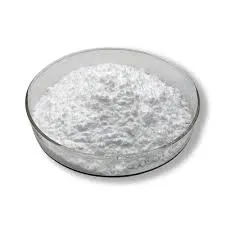
Dec . 01, 2024 03:50 Back to list
hydroxyethyl cellulose for paint
Hydroxyethyl Cellulose for Paint Enhancing Performance and Quality
Hydroxyethyl cellulose (HEC) is a non-ionic, water-soluble polymer derived from cellulose, a natural polymer found in plant cell walls. Due to its unique properties, HEC has become an indispensable component in the formulation of paints and coatings. This article explores the advantages, applications, and performance of hydroxyethyl cellulose in the paint industry.
One of the primary roles of HEC in paint formulations is as a thickening agent. Paints often require a specific viscosity to ensure optimal application and performance. HEC helps achieve this by increasing the paint's thickness without compromising its stability or workability. This viscosity control not only provides a smoother application but also enhances the paint's overall performance, ensuring that it adheres well to surfaces and offers consistent coverage.
Hydroxyethyl Cellulose for Paint Enhancing Performance and Quality
Another significant benefit of using HEC in paint is its role as a water retention agent. Retaining moisture during the drying process is crucial for achieving smooth finishes and preventing defects such as cracking or peeling. HEC's ability to form a gel-like structure helps retain water longer, allowing for extended working times and improved quality in the finished product. This feature is particularly valued in exterior paints, where exposure to environmental factors can influence the drying process.
hydroxyethyl cellulose for paint

Furthermore, HEC is an eco-friendly ingredient, making it an appealing choice for manufacturers aiming to produce sustainable paint products. Unlike many synthetic thickeners or additives, hydroxyethyl cellulose is derived from natural sources and is biodegradable. As environmental concerns grow, more consumers are looking for eco-friendly options, and HEC helps manufacturers cater to this demand while maintaining high performance.
The versatility of hydroxyethyl cellulose also extends to its compatibility with a wide range of other additives used in paint formulations. It can be easily combined with various pigments, surfactants, and preservatives, making it a flexible choice for formulators. This compatibility allows manufacturers to innovate and develop specialized paint products for different applications, such as eco-friendly, high-performance, or specialized coatings.
Real-world applications of HEC in paint formulation are vast. From interior wall paints to exterior coatings and industrial paints, HEC contributes significantly to enhancing the performance and durability of the end product. For instance, HEC is utilized in water-based acrylic paints, which are popular due to their ease of application, quick drying time, and low levels of volatile organic compounds (VOCs).
In conclusion, hydroxyethyl cellulose is a vital component in the paint industry, offering numerous advantages such as improved viscosity control, stability, water retention, and environmental sustainability. As manufacturers continue to innovate and respond to consumer demands for high-quality, eco-friendly paint products, the role of HEC is likely to become even more significant. By enhancing the performance and quality of paints and coatings, hydroxyethyl cellulose helps ensure that both consumers and professionals achieve the desired results in their projects.
-
Versatile Hpmc Uses in Different Industries
NewsJun.19,2025
-
Redispersible Powder's Role in Enhancing Durability of Construction Products
NewsJun.19,2025
-
Hydroxyethyl Cellulose Applications Driving Green Industrial Processes
NewsJun.19,2025
-
Exploring Different Redispersible Polymer Powder
NewsJun.19,2025
-
Choosing the Right Mortar Bonding Agent
NewsJun.19,2025
-
Applications and Significance of China Hpmc in Modern Industries
NewsJun.19,2025







